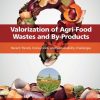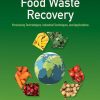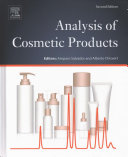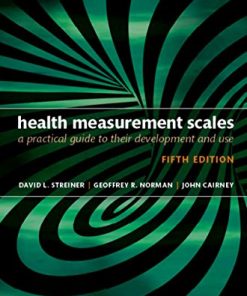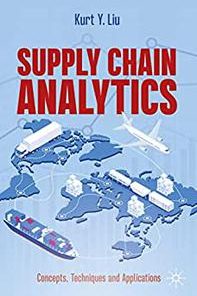Storage of Cereal Grains and Their Products 5th Edition by Kurt Rosentrater 0128127599 9780128127599
$50.00 Original price was: $50.00.$25.00Current price is: $25.00.
Storage of Cereal Grains and Their Products 5th Edition by Kurt A. Rosentrater – Ebook PDF Instant Download/DeliveryISBN: 0128127599, 9780128127599
Full download Storage of Cereal Grains and Their Products 5th Edition after payment.
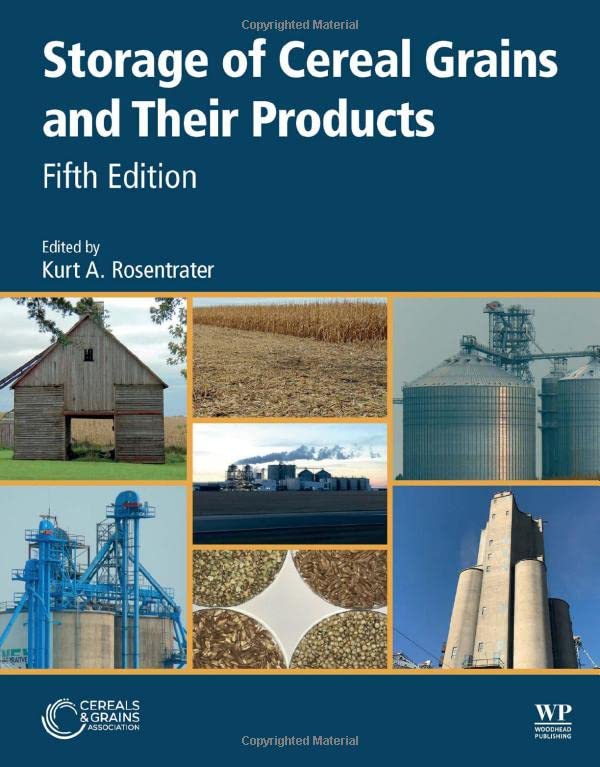
Product details:
ISBN-10 : 0128127599
ISBN-13 : 9780128127599
Author: Kurt A. Rosentrater
Storage of Grains and Their Products, Fifth Edition, presents the most authoritative reference on the principles and practices of storing and handling grains and their products. Divided into four main sections, the book covers the range of storage systems available in both the developed and developing world, the practicalities of the design and implementation of grain storage systems, looking in detail at handling, cleaning, drying, aeration, instrumentation amongst other topics, specific threats to stored grains, pulses, oils and pseudocereals from chemicals, rodents, insects and biosecurity, and the economics of grain storage, government regulations and future considerations.
Storage of Cereal Grains and Their Products 5th Table of contents:
Chapter 1. Introduction to cereal grains, pseudocereals, oilseeds, and pulses
Chapter 2. A brief journey through history
2.1. Storage in the ancient world
2.2. Storage in the Middle Ages
2.3. Effects of colonization and industrialization
2.4. The development of modern storage
2.5. Historic storage structures in use today
2.6. Grain history resources
2.7. Grain museums
2.8. Conclusions
Chapter 3. Overview of storage systems for cereal grains and grain products
3.1. General considerations
3.2. Major types of storage
3.3. Structural aspects of grain storage
3.4. Grain handling
3.5. Maintaining quality during storage
3.6. Operating hazards and safety measures
3.7. Storage facilities and capacities
3.8. Conclusions
Chapter 4. Alternative and emerging storage practices and technologies
4.1. Introduction
4.2. Intellectual paradigms in which stored product developments are occurring
4.3. Integrating harvesting and storage practices
4.4. Harnessing solar energy for postharvest technology
4.5. Solar-assisted grain drying
4.6. Recircaeration and refrigaeration
4.7. The role of insulation in grain cooling strategies
4.8. Percussion
4.9. Modified atmospheres
4.10. The role of computational science in developing alternative technologies
4.11. A framework for developing and implementing alternative storage practices
Chapter 5. Grain storage in developing countries
5.1. Introduction
5.2. Postharvest losses of cereal in developing countries
5.3. Main causes of post-harvest losses of grain in developing countries
5.4. Traditional grain storage methods and structures
5.5. Modern farm grain storage methods
5.6. Alternative grain storage methods
5.7. Conclusions
Chapter 6. Structural, physical, and engineering properties of cereal grains and grain products
6.1. Introduction
6.2. General structures and proportions of principal parts
6.3. Architecture of kernels
6.4. Husk
6.5. Pericarp and aleurone
6.6. Germ (embryo)
6.7. Endosperm
6.8. Physical and engineering properties of grains and grain products
6.9. Conclusions
Chapter 7. Design and engineering considerations for grain storage, handling, and processing facilities
7.1. Introduction
7.2. Overview of grain handling and storage facilities
7.3. Facility planning considerations
7.4. Considerations prior to designing and constructing
7.5. Life safety design considerations
7.6. Process design considerations
7.7. Secondary systems and components
7.8. Design engineering methodology
7.9. Conclusions
Chapter 8. Sampling, inspecting, and grading
8.1. Introduction
8.2. History
8.3. United States standards for grain
8.4. Sampling
8.5. Inspection and grading
Chapter 9. The significance of moisture and its measurement in cereal grains and grain products
9.1. Introduction
9.2. Quantification of moisture content
9.3. Grain quantity determination
9.4. The behavior of moisture in bulk solids
9.5. Moisture content and microbiological deterioration
9.6. Allowable storage time
9.7. Sampling
9.8. Methods of measuring moisture content
9.9. Precision and accuracy of grain moisture meters
9.10. Conclusions
Chapter 10. Cereal grain drying systems
10.1. Introduction
10.2. Concepts of grain drying
10.3. Energy consumption and conservation
10.4. Conclusions
Chapter 11. Rice drying systems
11.1. Introduction
11.2. Mechanical rice drying systems
11.3. Impacts of drying on milled rice quality
11.4. Conclusions
Chapter 12. Grain aeration systems and storage management
12.1. Introduction
12.2. Purposes of aeration
12.3. Aeration theory
12.4. Aeration system design
12.5. Aeration system operation
Disclaimer
Chapter 13. Hazard monitoring equipment selection, installation, and maintenance
13.1. Introduction
13.2. Elements of a dust explosion
13.3. Hazardous area classification
13.4. Monitoring points on select machinery
13.5. Summary of required monitoring points on machinery
13.6. Sensor devices
13.7. System design and configuration
13.8. Installation
13.9. Summary
Chapter 14. Safety, human interactions, and decision-makings processes
14.1. Challenges of measuring grain elevator safety
14.2. Measuring worker safety
14.3. Characteristics of grain elevator employees
14.4. Effective safety intervention
14.5. Decision-making analysis
14.6. Conclusion
Chapter 15. Identity preservation in grain supply chains and considerations for genetically modified materials
15.1. Introduction
15.2. Segregation, IP, and traceability
15.3. Increased production of GM crops
15.4. Conclusions
Chapter 16. Dust control and explosion prevention
16.1. Introduction
16.2. Dust explosion elements
16.3. Development of dust explosions
16.4. Prevention
16.5. Facility design and dust removal equipment
16.6. Housekeeping
16.7. Safety programs and emergency action plans
16.8. Guidelines to minimize grain dust explosion conditions
16.9. Summary
Chapter 17. Biochemical, functional, and nutritive changes during storage
17.1. Introduction
17.2. Respiration
17.3. Biochemical changes
17.4. Nutritive changes
17.5. Effects of drying
17.6. Organic acid-treated grain
17.7. Dormancy, viability, germination, and malting
17.8. Functional changes in wheat
17.9. Functional changes in other cereals
17.10. Indexes of deterioration
17.11. Summary
Chapter 18. Microflora and storage molds
18.1. Introduction
18.2. Microflora of grains and seeds
18.3. When storage fungi invade seeds
18.4. Effects of storage fungi on seeds
18.5. Conditions that promote damage to grains by storage fungi
18.6. Temperature monitoring and aeration
18.7. Sampling and testing
18.8. Predicting grain storability
18.9. Characteristics of major storage fungi
18.10. Preservatives for grains and grain products
18.11. Additional resources
18.12. Conclusions
Chapter 19. Mycotoxins in grains
19.1. Introduction
19.2. Aflatoxins
19.3. Fumonisins
19.4. Ochratoxins
19.5. Trichothecenes
19.6. T-2 toxin
19.7. Deoxynivalenol
19.8. Zearalenone
19.9. Additional resources for monitoring mycotoxins
19.10. Conclusions
Chapter 20. Rodents and grain
20.1. Significance
20.2. Types of rodents
20.3. Rodent biology
20.4. Control measures against rats and mice
20.5. Conclusions
Chapter 21. Insects in grains: identification, damage, and detection
21.1. Introduction
21.2. Insect classification, structure, and development
21.3. Insects in stored grain and grain products
21.4. Ecological and environmental factors affecting stored product insect populations
21.5. Damage caused by stored product insects
21.6. Detection of insect infestation
21.7. Conclusions
Chapter 22. Control of insect pests during storage
22.1. Introduction
22.2. Insect pest management in stored bulk raw grains
22.3. Management inside mills, food production facilities, and finished product storage
22.4. Summary
Chapter 23. Integrated pest management
23.1. Introduction
23.2. Prevention and management
23.3. Detection and monitoring
23.4. Current challenges and future directions
23.5. Summary
Chapter 24. Fumigation
24.1. Introduction
24.2. Principles of fumigation
24.3. Types of fumigation
24.4. Methods of application
24.5. Monitoring
24.6. Safety
24.7. Further information
24.8. Summary
Chapter 25. Economics of grain storage
25.1. Rationale for grain storage
25.2. Segregation, blending, and comingling
25.3. Types of grain storage structures
25.4. Storage ownership options
25.5. The decision to store grain
25.6. Storage costs
25.7. Returns on investment in storage structures
25.8. Summary
Chapter 26. Global food security perspective
26.1. Introduction
26.2. Trends in grain stockholding
26.3. Role of stocks
26.4. Difficulties in measuring stocks
26.5. Stocks and food price volatility
26.6. Concluding remarks
People also search for Storage of Cereal Grains and Their Products 5th:
improper handling and storage of cereal grains and oilseeds
drying and storage of cereal grains
safe moisture content for storage of cereal grains is
storage of cereal grains pdf
storage of cereal grains and their products pdf
Tags: Storage, Cereal Grains, Their Products, Kurt Rosentrater
You may also like…
Erotica - Fiction
History - Military History
Technique - Energy: Renewable Energy
Energy Storage Systems: System Design and Storage Technologies 1st Edition
Health
Health Measurement Scales: A practical guide to their development and use 5th Edition, (Ebook PDF)
Medicine - Oncology
Facharztwissen Hämatologie Onkologie 5th Edition by Kurt Possinger 9783437097898
Business & Economics - Logistics


